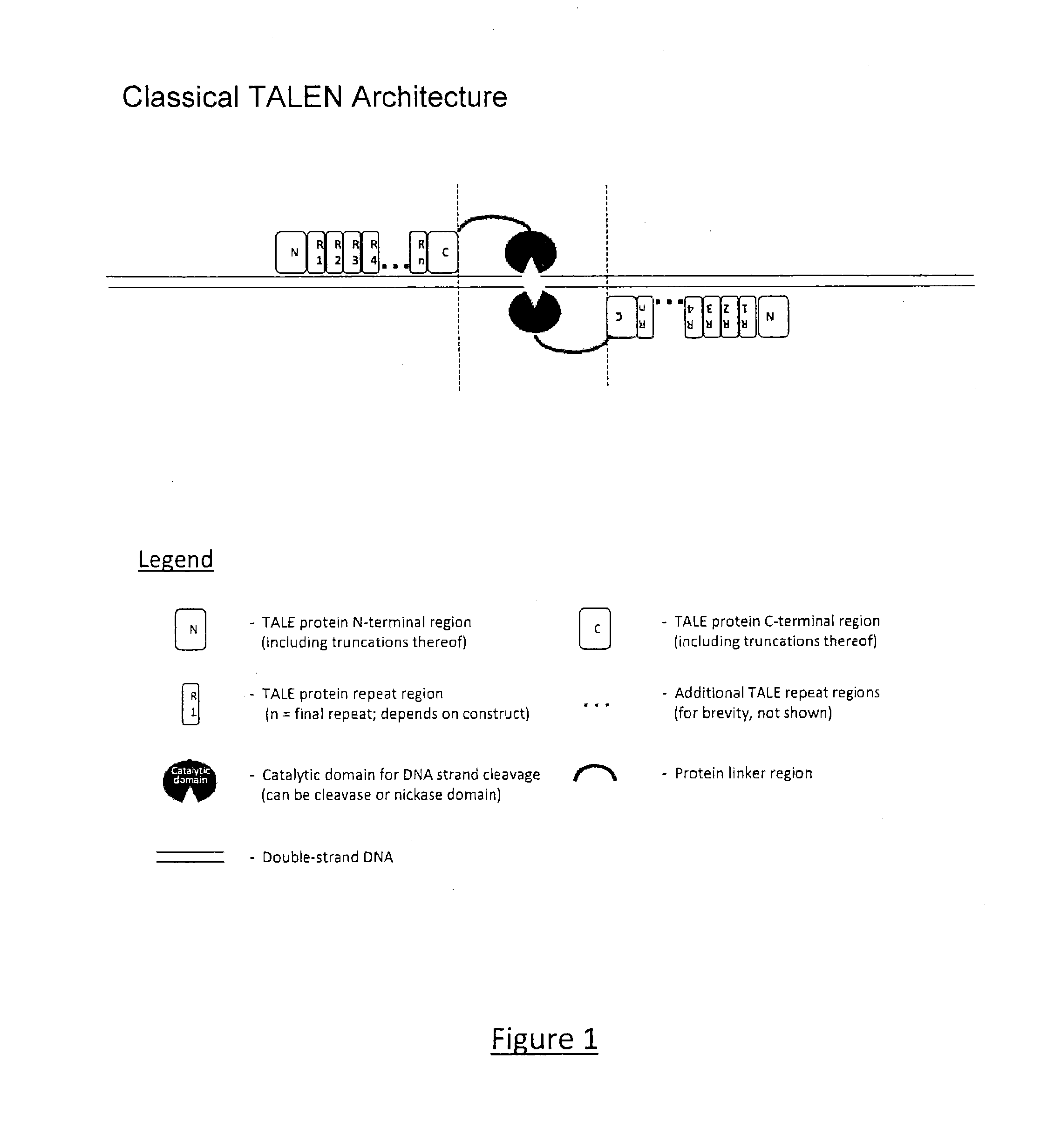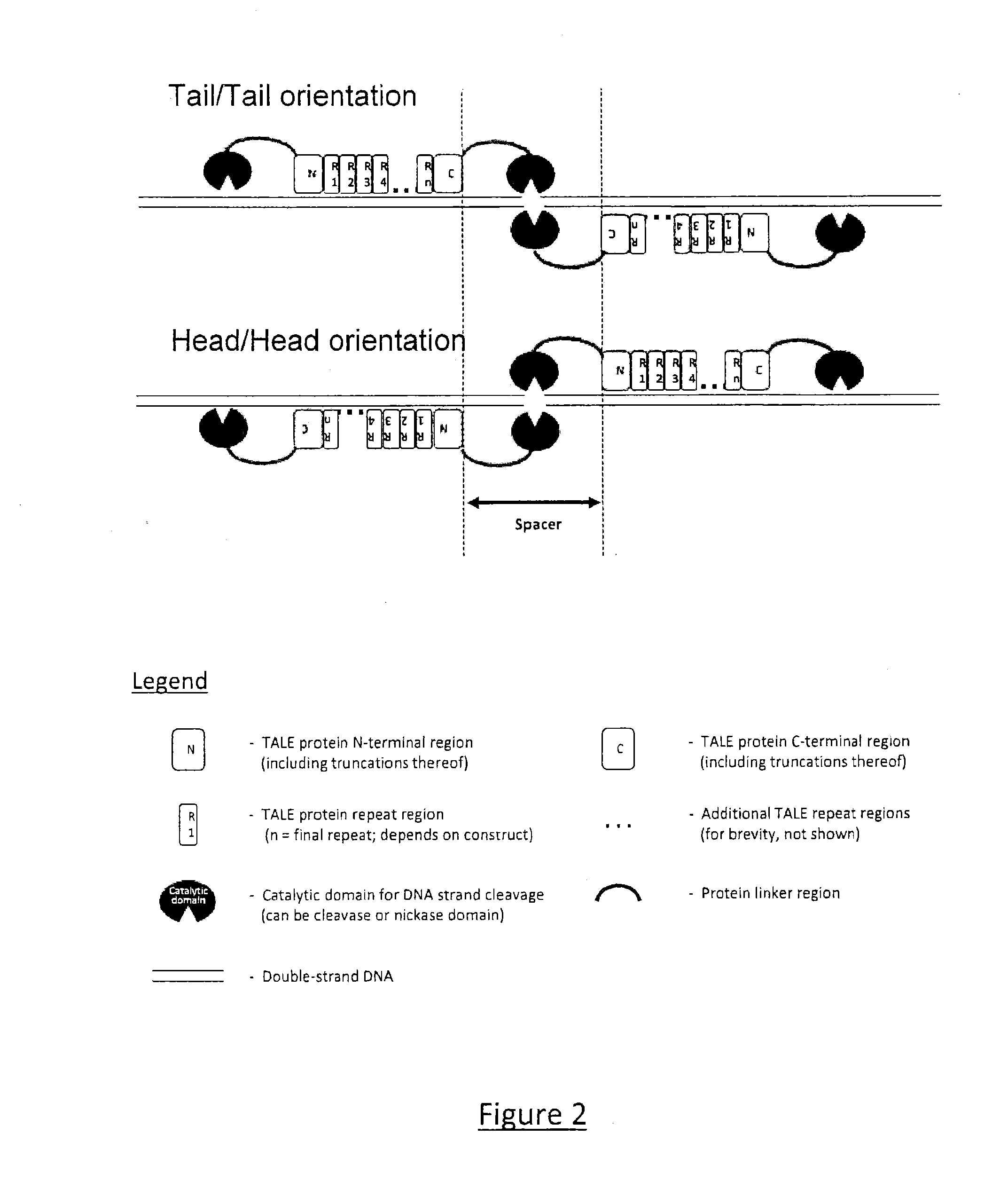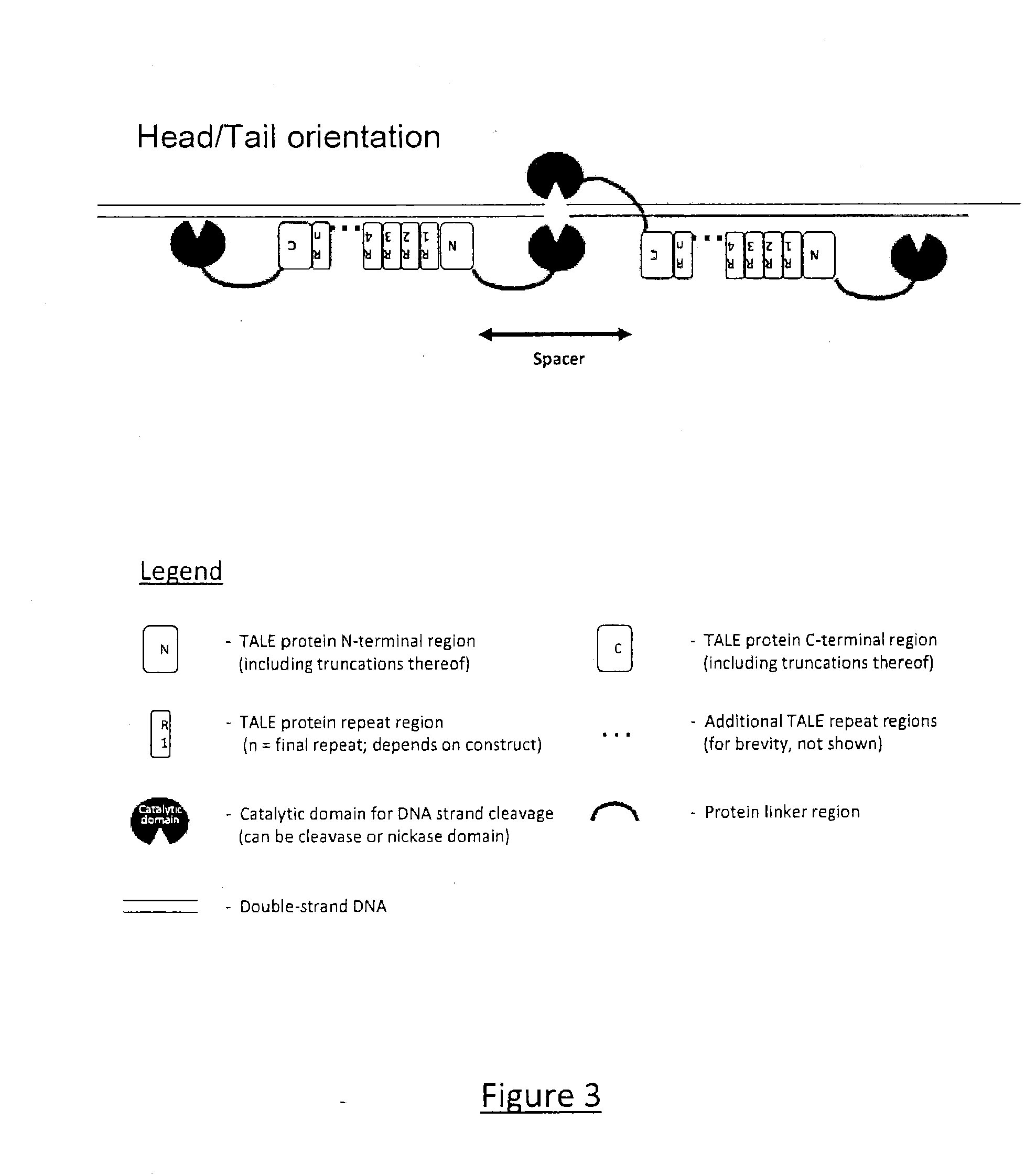Transcription Activator-Like Effector (TALE) Fusion Protein
- Summary
- Abstract
- Description
- Claims
- Application Information
AI Technical Summary
Benefits of technology
Problems solved by technology
Method used
Image
Examples
example 1
Activities of Tail / Tail and Head / Head Protein Configurations
[0112]Cloning of the “AvrBs3” RVD Array in the TAL Backbone
[0113]The amino acid sequences of the N-terminal, C-terminal domains and RVDS were based on the AvrBs3 TAL (ref: Gen Bank: X16130.1, SEQ ID NO: 1). The yeast expression TAL backbones used in these experiment (pCLS13597, SEQ ID NO: 2 and pCLS12843, SEQ ID NO: 3) were derived from the pCLS8422 (SEQ ID NO: 4) and pCLS8426 (SEQ ID NO: 5) respectively, where a second FokI Catalytic head was introduced by blunt end cloning in the EcoRV site and subsequent sequencing to validate the FokI orientation and sequence integrity. The cassette comprised between the NcoI and BamHI were further subcloned in pCLS7183 (SEQ ID NO: 6) leading to the final yeast cloning backbones. These backbone, pCLS13597 and pCLS12843, contain an additional N-terminal NLS sequence followed by an HA tag upstream the first FokI catalytic head. The C-terminal and the N-terminal domains (complete Nter doma...
example 2
Activities of Head / Tail Protein Configuration
[0116]Cloning of the “GCT” RVD Array in the TAL Backbone
[0117]The amino acid sequences of the N-terminal, C-terminal domains and RVDS were based on the AvrBs3 TAL (ref: GenBank: X16130.1, SEQ ID NO: 1). The yeast expression TAL backbone used in these experiment (pCLS13597, SEQ ID NO: 2) was derived from the pCLS8422 (SEQ ID NO: 4), where a second FokI Catalytic head was introduced by blunt end cloning in the EcoRV site and subsequent sequencing to validate the FokI orientation and sequence integrity. The cassette comprised between the NcoI and BamHI was further subcloned in pCLS7183 (SEQ ID NO: 6) leading to the final cloning yeast backbone. This backbone, pCLS13597, contains an additional N-terminal NLS sequence followed by an HA tag upstream the first FokI catalytic head. The C-terminal and the N-terminal domains are separated by two BsmBI restriction sites. The RVD arrays (SEQ ID NO: 13), targeting the repeated GCT sequences (SEQ ID NO...
PUM
| Property | Measurement | Unit |
|---|---|---|
| Fraction | aaaaa | aaaaa |
| Distance | aaaaa | aaaaa |
| Threshold limit | aaaaa | aaaaa |
Abstract
Description
Claims
Application Information
 Login to View More
Login to View More - R&D
- Intellectual Property
- Life Sciences
- Materials
- Tech Scout
- Unparalleled Data Quality
- Higher Quality Content
- 60% Fewer Hallucinations
Browse by: Latest US Patents, China's latest patents, Technical Efficacy Thesaurus, Application Domain, Technology Topic, Popular Technical Reports.
© 2025 PatSnap. All rights reserved.Legal|Privacy policy|Modern Slavery Act Transparency Statement|Sitemap|About US| Contact US: help@patsnap.com



